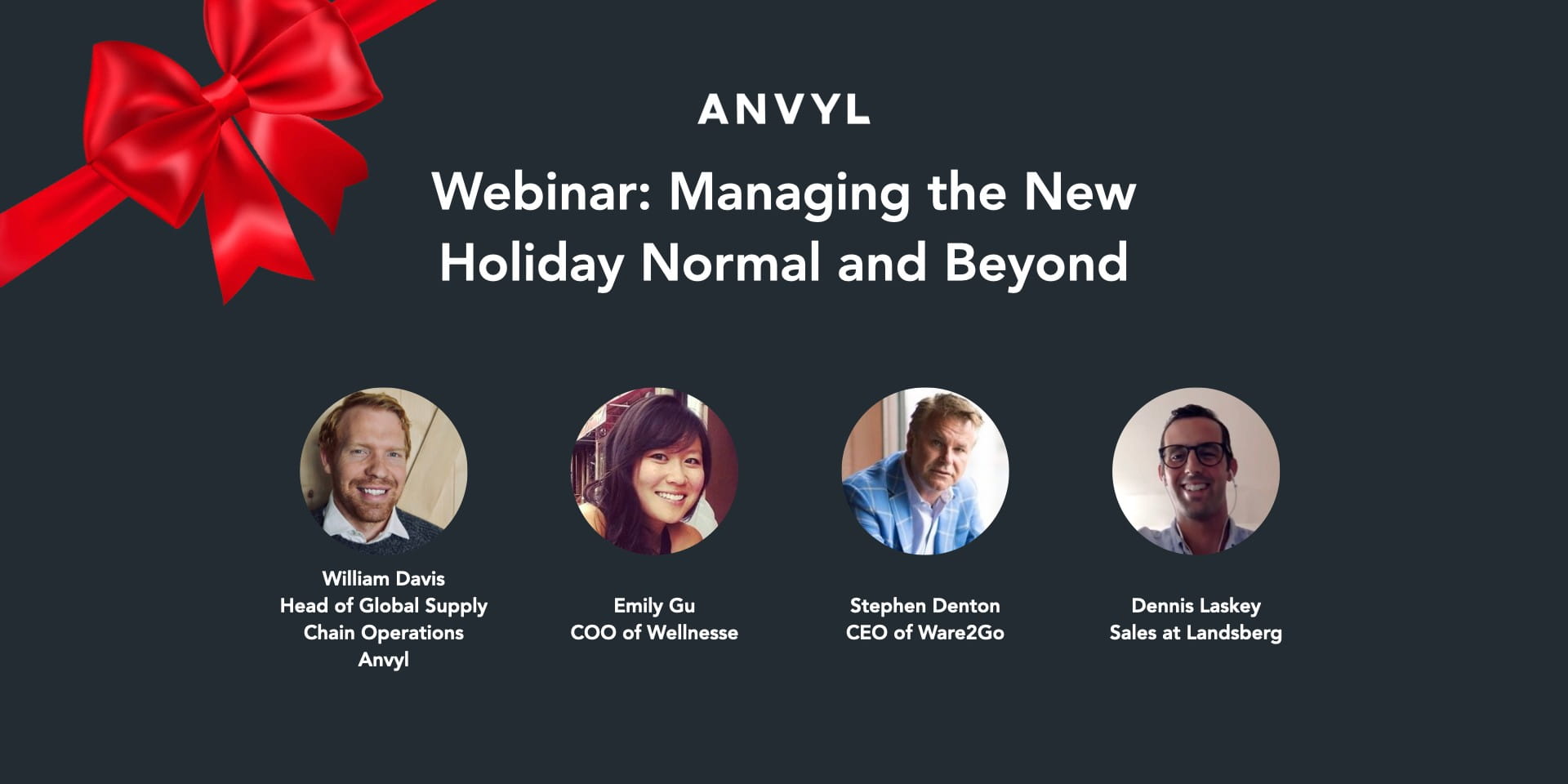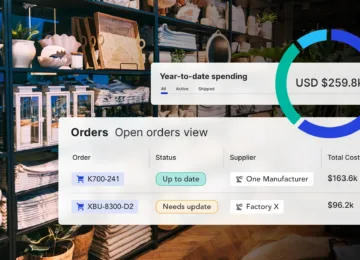Last week, we hosted a webinar with a panel of supply chain experts to talk about how brands can better manage their supply chain with today’s new normal. In anticipation of the upcoming holidays and beyond, there are several trends that are happening within supply chains that you can prepare for now to ensure a smooth transition into 2021.
Meet the experts who joined us in this webinar.
- Emily Gu, COO of Behave, is also the former COO of Wellnesse and former VP of Operations at Native.
- Dennis Laskey, Sales at Landsberg Orora Packaging, brings 13 years of experience in the corrugate and secondary packaging space to the table.
- Stephen Denton, CEO of Ware2Go, is the former President and CRO of Collective[i] and former GM and Vice President of Marketing Solutions at Ebay.
- William Davis, Head of Global Supply Chain Operations of Anvyl, has led supplier initiatives for the past 2 years. Prior to Anvyl, Will led packaging development teams at L’Brands and L’Oreal, launching hundreds of new products across many sales verticals.

Solving the sales and supply chain challenges
Many brands are adjusting to retailer closures and limited capacity by changing their sales strategy to include DTC. To move large volumes of inventory, we are seeing brands come up with new selling strategies like starting sales earlier, providing deeper discounts, or offering promotions for longer periods of time. That said, if sales challenges are being addressed, it’s important that brands address the supply chain challenges as well.
If you’re not addressing and solving the supply chain problems, this will result in a disappointing user experience, a bad review, or a return. This could have a longer term impact on your brand, so you have to pay attention to both equally. The standard consumer expectations include two-day delivery, easy return processes, and transparent pricing.
Anticipation for holiday returns
While returns will be very dependent on the industry and products you sell, for many brands that have traditionally sold their products to retailers or B2B channels, the sales shift to B2C could result in a shockingly higher return rate. Reverse logistics are going to be very critical if customers don’t have an actual store to return the product to. Brands are going to need to focus on meeting the demand during this period of time, while also meeting the need for reliable and timely logistics for returns.
The end goal is to make sure customers are as happy as possible while still making a profit. When looking at the numbers, unit economics can get expensive, so baking the anticipated returns and reverse logistics into your margin is key to ensuring that the brand isn’t penny pinching over a small return or losing money. Try accomplishing this by having a return policy that the customer service team sticks to and that enables you to provide a great customer experience with a solid reverse logistics plan.
Don’t forget Chinese New Year
From a supplier perspective, vessels coming in from China are significantly different from the past. For example, prior to the COVID-19 closures, a supplier like Landsberg Orora Packaging would receive 5 vessels per week from China, with an 8 to 10 week lead time from point of purchase order. Today, there is only about 1 vessel per week coming from overseas now. During Q4, there is even greater port congestion: what used to take 3 to 5 days through customs is now taking 2 to 3 weeks.
For this reason, and anticipating the factories in Asia will lose a month of production time during Chinese New Year, Landsberg Orora Packaging recommends its clients place all their orders before December 15, 2020, purchasing enough inventory to last through May 1, 2021.
As a brand, planning for this can be stressful to think about, especially if the brand is cash flow constrained. It is imperative to talk with your suppliers on flexible payment options as well as understanding what the timelines are for getting through the first half of 2021 with enough inventory. The buyer-supplier relationship is extremely important to get through the holidays and beyond. Understanding everyone’s position helps you get to the right solution.
Watch the full recording
For additional insights into improving supply chain relationship management (SCRM), addressing changes in consumer behavior, and understanding capacity issues in your industry, watch the full recording below.
If you’re interested in learning how Anvyl can help you with SCRM with our supply chain software, production insights, and streamlined collaboration tools, please contact us for more information.



